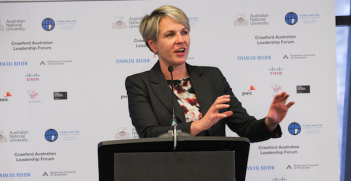Embracing the Ideas Boom: Innovation Lessons from Estonia

In December 2015, the Turnbull Government announced its $1.1 billion National Innovation and Science Agenda. With its ranking of 17th in the world for innovation, Australia has significant potential, yet still much to learn.
While Australia is globally number one for time spent by children in school, it ranks only 77th in science and engineering graduates. This is just one example of how Australia is failing to embrace innovation. With a declining resources boom and emerging middle class in nearby Asia, the time has never been riper. However, there needs to be a cultural shift for this to happen.
Other countries around the world are already adopting innovation measures. Estonia, for example, is considered the world’s most digital country, where selling a car, tax declarations and voting can all be done electronically. Similarly, neighbouring Finland is ranked the number one country in the world for innovation. By following these countries’ example, Australia has significant potential to become a world leader in innovation.
E-Estonia
As a relatively resource-poor state with a population of a mere 1.3 million, Estonia had no choice but to embrace the technology age when it became an independent state at the end of the Cold War. Since then, it went on to invent Skype and today Estonia has the highest number of start-up companies per capita in the world.
The Estonian government has invested heavily in innovation in the hopes that its capital Tallin will become the “Silicon Valley of Europe.” It takes what it describes as “an all-nation approach”, through which there is cooperation between the private, public and academic sectors to transform the country into a prime destination for companies to create and test new technologies.
In addition to creating an attractive location for start-ups, the Estonian government has thoroughly invested in digitisation in recent decades. Today, virtually everything in Estonia can be conducted online. Parents can view their children’s exam results and communicate with their teachers through the e-schools system, prescriptions are instantly transferred online from the doctor’s surgery to the pharmacy and every resident has access to a secure online identity through the e-residency process.
This ground-breaking technology means that every person in the country – Estonian national or otherwise – can securely sign documents and contracts electronically and conduct their banking online. This e-residency technology is also subject to high levels of encryption, meaning that it has optimised security.
Another important benefit of this digital platform is that any company can register itself and be established online in as little as 15 minutes. In any other country, establishing a start-up would take a minimum of two hours, and would have to be done in person. There is much to be said for the simplicity of this system, which makes Estonia an appealing location for start-up companies around the world.
Since it began its innovation venture, Estonia has seen the equivalent of AU$15 billion in benefits. There are one-third less queues in hospitals and the police force is 50 times more effective. In addition, it is estimated that Estonia has saved an incredible 50% of its GDP. For a resource-poor country with a small population, this innovation push has made a difference.
By engaging in this self-digitisation, not only has Estonia saved itself money, but it has also ensured that it is an enticing location for international entrepreneurs, innovators and investors alike.
Potential for Australia
With a declining resources boom and emerging middle class in Asia, the time has never been riper for Australia to embrace the digital revolution and invest in innovation. We have much to learn from Estonia’s example and with the support of the government, many benefits to reap. The key is to make Australia attractive to both domestic and international start-ups.
Although Australia has significant potential, for the moment it is not doing enough to support innovation. To change this, first and foremost there needs to be less government red tape and the establishment of more landing pads for new companies. This will help to eliminate the current risk-averse psyche that is so present among Australians.
In Australia’s recent National Innovation and Science Agenda, the government made a pledge to lead by example. This is a positive start that needs to be taken further by focusing on commercialising innovative ideas.
An example of where the failure to do this in the past is the 1990s invention of Wi-Fi. With this creation, there was no cooperation between developers at CSIRO and the private sector and no push for commercialisation. Ironically, today Wi-Fi is an important piece of technology that is used worldwide. Despite it being invented here, Australia has not seen any real profit.
As the example of Estonia demonstrates, Australia has much to gain from embracing technology and innovation. The National Innovation and Science Agenda is a good start, however there is still more to be done. With government support and an investment in innovation, Australia is in a prime position to become a world leader in this sector. It’s time to embrace the future.
Margaret Goydych completed her Bachelor of International Relations at the Australian National University. She is currently an intern at the AIIA National Office and editor of Australian Outlook. This article is published under a Creative Commons Licence. It may be republished with permission.





